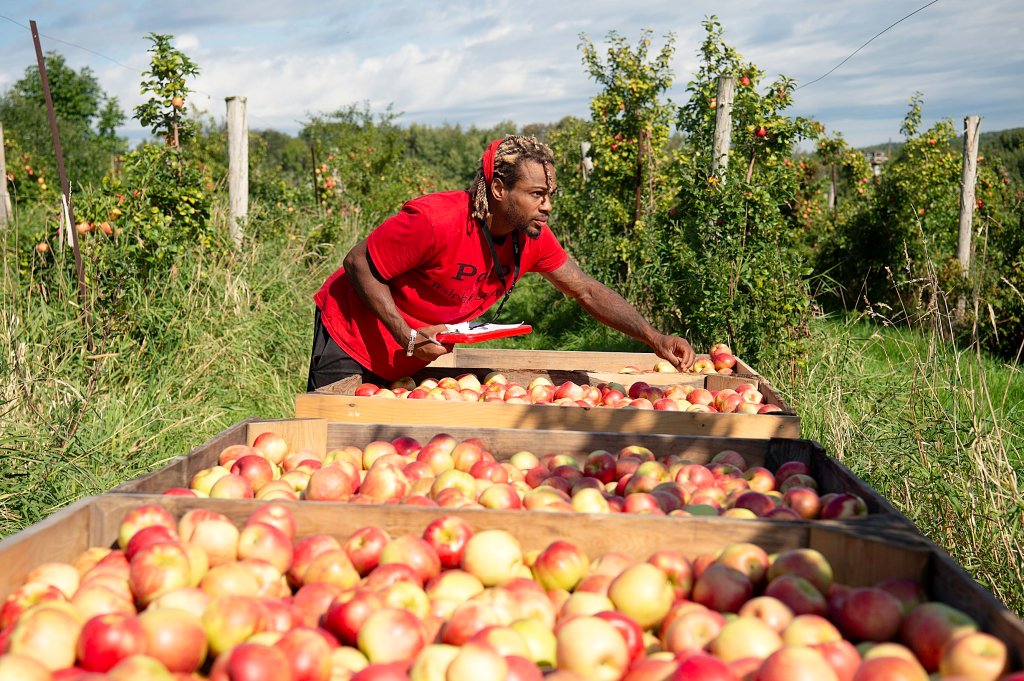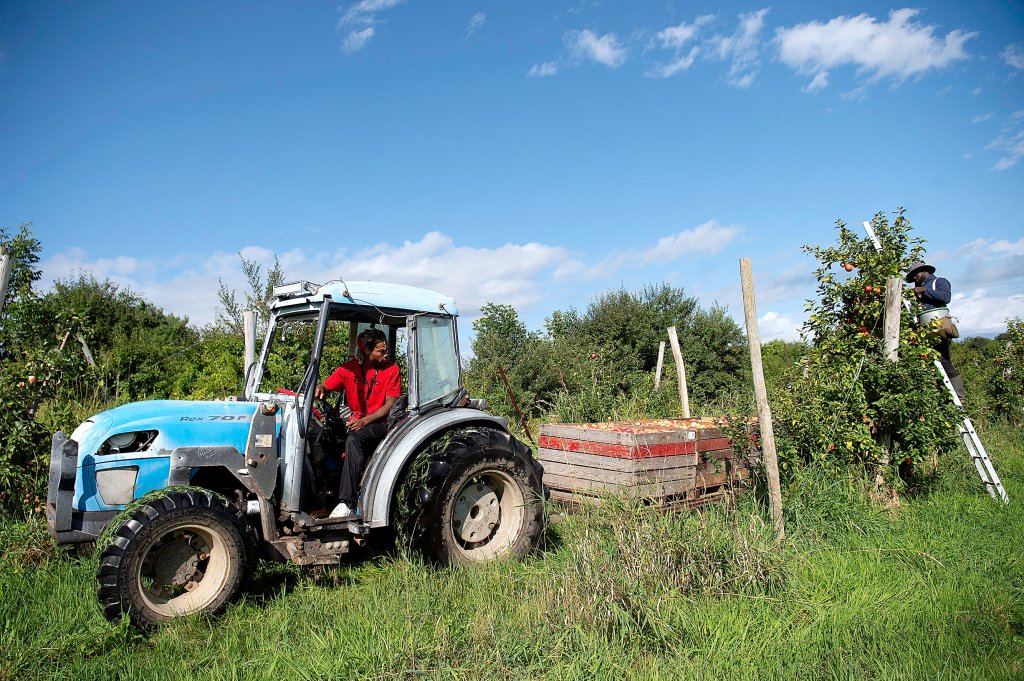Preparations were underway along the Maine coast Thursday for the arrival of Hurricane Lee, which is expected to bring high winds, flash flooding, coastal erosion and power outages this weekend.
Gov. Janet Mills declared a state of emergency in anticipation of the storm and asked President Biden to issue a Presidential Emergency Disaster Declaration, which would allow Maine to access federal resources and personnel to assist with the storm response.
“We continue to closely track the storm and are expecting heavy rains and high winds that likely will cause storm surge, inland flooding, infrastructure damage, and power outages,” Mills said. “We continue to strongly urge Maine people – particularly those Downeast – to exercise caution and to take steps to ensure they have what they need to stay safe as the storm draws closer.”
The state of emergency declaration triggers Portland’s hazard pay provisions and came as coastal residents were busy hauling boats out of the water, trimming and removing trees to prevent damage and getting ready to hunker down during the storm.
A hurricane watch is in effect between Stonington and the Canadian border, signaling the possibility that Lee could bring sustained winds of at least 75 mph when it hits Down East. But even if the storm no longer qualifies as a hurricane when it makes landfall, which forecasters say is likely, it could still cause widespread power outages and pose a threat to those living near the coast.
THE PATH OF THE STORM
Even though cooler northern waters are expected to weaken the storm before it reaches New England shores, several factors could make it particularly destructive, said Louise Fode, a warning coordination meteorologist with the National Weather Service’s Caribou office.
She said Down East Maine should see sustained winds of 30-50 mph through Saturday, with gusts reaching up to 70 mph. While those wind speeds more closely resemble a Nor’easter than a hurricane, no winter freeze will root trees in place. Instead, soils have been saturated by summer rainfall, leaving foliage more susceptible to winds. Leaves could also act as sails, exacerbating the effect and resulting in “extensive power outages” as far inland as Millinocket, Fode said.
Water will pose an additional threat. Although she said the risk of inland river flooding remains low, up to 4.5 inches of rain could trigger flash flooding Down East. Those living along the coast should be particularly wary of powerful ocean waves, which could reach 20 to 22 feet in open water, Fode said.
Coastal areas from the Midcoast south will see less severe impacts, with any wind and rain likely arriving late Friday night and carrying into Saturday, said Stephen Baron, a meteorologist at the National Weather Service in Gray. The area was under a tropical storm warning Thursday night.
Baron said the storm will bring sustained winds of between 25 and 30 miles per hour and gusts up to 50 miles per hour along the water in southern and Midcoast Maine. Inland wind gusts are expected to be around 40 to 45 miles per hour. The weather service had issued a “hazardous weather outlook” Thursday for inland Maine, where the storm is expected to be more mild.
“As far as the coastal impacts, that would be rip currents, high surf and some possibly minor flooding due to the wave action,” Baron said.
He said rainfall is not expected to be significant. “We can’t rule out an isolated downpour that might drop an inch, but we’re certainly not expecting anything excessive at the moment,” Baron said.
The storm surge will lose some power before it reaches Maine’s shores, but in some areas waves will likely still reach oceanside roads at high tide, potentially leaving behind debris that could endanger drivers.
During the high tides on Friday night and Saturday morning – which will be particularly high because of the recent new moon – residents should be especially careful near the coast. Acadia National Park, in Hancock County, has issued closures for several parts of the park.

Hurricane Lee in the Atlantic Ocean on Thursday at 7:51 a.m. Lee looks poised to wallop New England later this week. NOAA via AP
But with Lee still more than a day out from landfall, forecasts remain in flux, Fode said. In particular, it’s difficult to predict which areas will be hit hardest by the storm surge because that will depend on several changing factors, including the direction of the wind.
“We know there’s going to be high waves,” Fode said. “Where exactly they make it on shore is kind of the question mark.”
‘A FULL COURT PRESS’
With blue skies overhead on Thursday, energy workers and Maine’s emergency management agencies prepared for a busy weekend.
Central Maine Power spokesperson Jon Breed said the company is in a “full court press” as it continues to track the path of the storm and develop a plan to target expected downed power lines across southern and Midcoast Maine.
“What we’re talking about here is an art, not a science,” he said. “It’s kind of like a moving target.”

Arborist Jon Labbe works on trimming off a small section of a sugar maple tree in front of a home in Yarmouth on Thursday. Labbe and the team with Southern Maine Tree worked on taking down five trees at the home. Cross said their company has been receiving many calls from people trying to get trees taken down before Saturday’s storm. They rescheduled the original job they had for the day and fit the client in because one of the trees was in danger of falling on a structure during the storm. “This was kind of an emergency situation,” Cross said. Brianna Soukup/Staff Photographer
Friday, more than 500 outside line crews will join about 120 internal CMP crews to prepare for the storm’s arrival, Breed said. The company has not yet determined where it will stage crews because of the uncertainty in the forecast. If Lee continues to drive east, Breed said, CMP will be able to concentrate more workers up the coast, where there will likely be more outages.
It is too dangerous for line workers to use raised bucket trucks when sustained winds stay above 35 mph, which Breed said would likely limit line repairs until at least Saturday night.
Throughout Saturday, he said, line crews and 300 vegetation management crews will help local emergency management agencies keep roads safe by clearing downed lines and trees. If outages are extensive, up to 500 crews from other nearby states could arrive on Sunday to provide backup, Breed said.
Versant Power, which serves northern and eastern Maine, said in a statement Wednesday that it was preparing for impacts from high winds and heavy rain expected Saturday.
“The storm path is still uncertain, but we’re preparing for outages throughout our service territory and have secured contract crews to support our internal crews over the weekend into the beginning of next week as necessary,” said Kevin Black, storm manager for Versant Power. “With already saturated ground and leaves on the trees, we’re anticipating downed trees and branches to bring down lines.”
The Maine Emergency Management Agency said Mainers in the storm’s path should be prepared to go up to 72 hours without power over the weekend, according to a department spokesperson. Residents should watch the department’s website for up-to-date information about evacuation orders and local emergency shelters.

Joe Doherty, who works for Southern Maine Tree, walks past a pile of tree parts after spending the day taking down five trees at a home in Yarmouth on Thursday. Brianna Soukup/Staff Photographer
TREES PREPPED FOR DAMAGE
A rainier than normal summer has already left trees more susceptible to damage and last week contributed to power outages during a series of thunderstorms in York County.
Justin Cross, owner of Southern Maine Tree, which provides tree removal and arborist services in the Portland, Falmouth and Scarborough areas, was working at a site in Yarmouth on Thursday where his company had been called to clean up a tree that split during last week’s storm.
He said his crew discovered four other trees that were suffering from various issues including rot and emerald ash borer that also needed to be removed ahead of Hurricane Lee.
“Since about 6:30 a.m. this morning my phone has not stopped ringing,” said Cross, who said he has been inundated with requests for tree removals ahead of the weekend storm. He said he won’t be able to get to all of them and is planning to give his employees a short day of storm preparation Friday.
“I figured since they will have to work Saturday and Sunday they should have a little break,” he said.
Cross said invasive pests like the Hemlock woolly adelgid and brown tail moth, combined with a late frost last spring and the large amount of rain this summer have all contributed to weakened trees that are more vulnerable to storm damage.
“All these things are working together to create a really bad situation,” he said.
In Portland, city forestry crews have been trimming branches year round and are ready to be deployed for any major tree issues this weekend, city spokesperson Jessica Grondin said in an email. Grondin said the city is also prepared to close streets if they become flooded and confirmed Thursday night that the governor’s emergency declaration would trigger hazard pay in Portland.
A city ordinance approved by voters in 2020 raises the minimum wage 1.5 times when a city or state emergency is in place.
The city’s minimum wage is currently $14 per hour, which means the minimum hazard pay wage would be $21 per hour. The ordinance does not apply to teleworking arrangements that allow employees to work from home.

City workers, with help from truck operators from Statewide Towing Inc. of Chelsea, lift a section of floating dock on Thursday from the Kennebec River in Augusta. Hurricane Lee is forecast to hit the capital area over the weekend, prompting officials to remove the dock earlier than usual for the season. Joe Phelan/Kennebec Journal
TROUBLED WATERS
The storm’s creep north has left sailors, fishermen and others along the working waterfront with a decision to make: pull boats and fishing gear from the ocean until the storm passes, or risk the wrath of Lee?
Several ships owned by American Cruise Lines were to dock in Portland and Bangor on Thursday evening and Friday morning and will remain there until the weather clears, a company spokesperson said.
Grondin, the Portland city spokesperson, said some cruise ships expected to arrive this weekend have cancelled, but others are staying in town to avoid the impacts of the storm.
She said the city is expecting to have four cruise ships in town for the duration of the storm and they will stay tied to city piers to stay safe.
Will Owen, Yarmouth harbormaster and president of the Maine Harbormasters Association, sent a notice to all harbormasters in the state Tuesday saying that anyone who is considering removing their boat from the water still has time to do so.
Peter Rauscher, dock master at Port Harbor Marine Spring Point Marina in South Portland, said more than 300 boats were pulled out of the water at the marina this week in preparation for the storm. He said he was hoping the storm would be no worse than a typical nor’easter.

A boater motors on Thursday from Smithtown Marina & Campground in Pittston to the Gardiner boat landing, where the boat is to be pulled from the water. Boaters have been heeding warnings and removing their boats from the Kennebec River before Hurricane Lee’s arrival. Marina owner Rich Potter also moved campers from underneath trees to avoid damage. Joe Phelan/Kennebec Journal
“We’re just making sure all our dock systems are secured and all the canvas and sails aboard the boats on land are zipped up and secured,” Rauscher said Thursday afternoon. “We’ll be shutting down our fuel system at the marina and also making sure any debris or anything that can end up in the water is picked up and cleaned up.”
Those who choose to leave their boats should make sure they are secure and monitor them throughout the storm.
And some are willing to take their chances.
Vinalhaven harbormaster Jim Koulton said he’s seen some people pull their skiffs out of the water, but most of the more than 100 fishing boats at Carvers Harbor on the southern tip of this island remain docked.
“I don’t know of anybody hauling their boats out over here because of the wind direction,” he said. “I don’t think it’s going to be as bad as the news keeps telling us anyway.”
Koulton still has memories of a “nightmare” storm that hit Vinalhaven some 40 years ago.
But as a year-round commercial fisherman, he said he’s grown used to the threat of storms and generally trusts that the harbor will shelter the boat that serves as his livelihood. He’s more worried about his fishing equipment, most which is set up 20 to 30 miles off the island.
Retrieving his hundreds of traps and the rest of his gear, which he estimates is worth $100,000, would take at least eight or nine 50-mile trips to sea – a herculean effort even if he had time to manage it.
“Don’t think that all of us aren’t concerned about a hurricane, because we are. But all of us, me and everybody else, we follow the weather and we make the best choice we can based on what information we have and hope for the best,” he said. “Fishing is a gamble. I let God be God and pray for the best, and whatever happens is gonna happen.”
Copy the Story LinkSend questions/comments to the editors.








Success. Please wait for the page to reload. If the page does not reload within 5 seconds, please refresh the page.
Enter your email and password to access comments.
Hi, to comment on stories you must . This profile is in addition to your subscription and website login.
Already have a commenting profile? .
Invalid username/password.
Please check your email to confirm and complete your registration.
Only subscribers are eligible to post comments. Please subscribe or login first for digital access. Here’s why.
Use the form below to reset your password. When you've submitted your account email, we will send an email with a reset code.